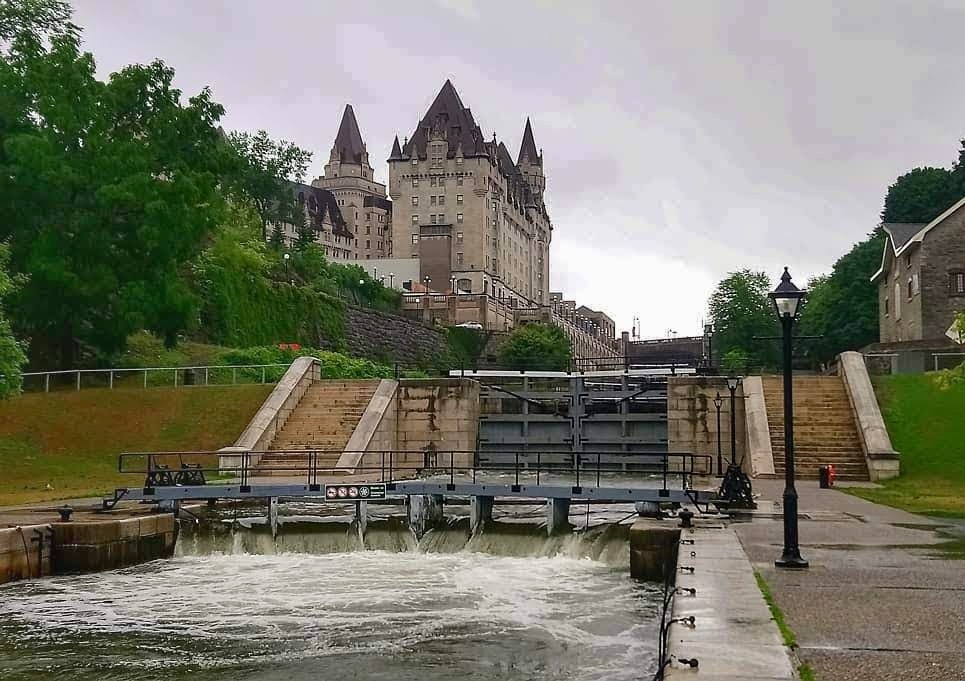The Bike Ottawa Advocacy Working Group (AWG) has reviewed the Rideau Canal Draft Management Plan and submitted comments to the Ontario Waterways and Parks Canada. We find the plan is quite high level, but does not adequately consider accessibility or active transportation.
We have proposed more specific enhancements to the plan, with a focus on cycling infrastructure, as well as making the crossings more accessible for all users.
The crossings for the Rideau Canal should be viewed as mini-bridges which should be accessible to all people, regardless of age or abilities. Building crossings in this way will enhance the connections across the Canal and help build connections between communities.
For specific details, read our letter below, or access the PDF here.
To: David Britton, Director, Ontario Waterways, Parks Canada
Susan Millar, Planner, Ontario Waterways, Parks Canada
Via email: pc.rideau.pc@canada.ca
Date: April 30, 2021
Subject: Rideau Canal Draft Management Plan
Dear Mr. Britton and Ms. Millar,
I am writing concerning the Rideau Canal Management Plan, on behalf of the Bike Ottawa Advocacy Working Group.
Our organization finds that the Plan offers a good high-level overview. Nevertheless, we believe that more attention should be given to making the sites more accessible to cycling and other forms of active transportation.
Here are following are a few cycling specific considerations that we’d like to highlight:
- Accessibility considerations such as ramps over locks, including the width of the ramps and crossways. Ramps and crossways should be accessible to wheeled devices, bikes, and e-bikes, including bicycles set up for cycle-touring and cargo bikes, etc.
- Access to good-quality racks for all types of bikes at each lock site. Racks used at Landsdowne are a good example of this, as all types of bikes can be locked at the frame.
- Provision of repair maintenance stands with bike pumps alongside racks. These would greatly support bike tourists as well as the everyday person on a bike.
- Consideration of pathway widths and connections, especially for the portions of the Canal in busy urban environments like Ottawa. The Transportation Association of Canada suggestees widths of 2.1m and segregation between walking and cycling for urban environments. This is a lower-stress environment for pedestrians who walk at 5kph, compared with cyclists at 20kph.
- Pathways should connect to National Capital Commission and City of Ottawa cycleways.
- Winter maintenance of pathways, especially in busy urban environments like Hartwell Locks (locks 9-10) and the Trans-Canada Trail (locks 1-8) at the Ottawa River, is crucial. Particular consideration should be given that pathway design be amenable to winter maintenance so as to encourage year-round access. Also, a plan detailing this maintenance should be developed as part of the infrastructure-planning process, as accommodations may need to be made for maintenance equipment.
- Pathways should be designed to minimize water and ice accumulation and to accommodate all maintenance equipment. Less environmentally harmful deicing products like potassium formate and or mechanical methods like sweeping should also be considered. Another option is packed-snow standard that does require levelling, gritting and removal of snow, if the surface becomes soft.
Thank you in advance for your consideration of our comments and concerns. Please feel free to contact us if you have any questions.
Kind regards,
Nicole Lewis
Member, Advocacy Working Group

